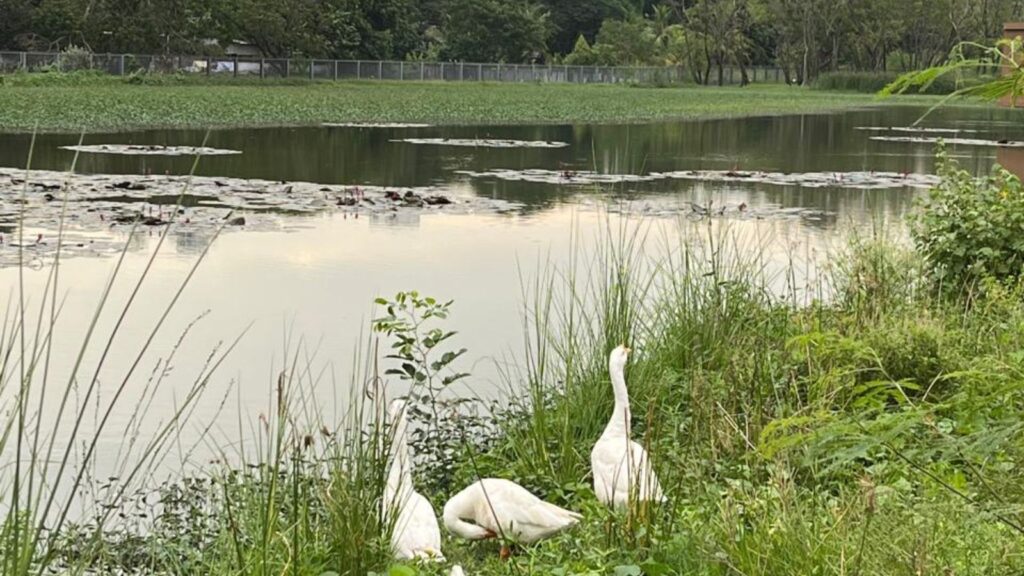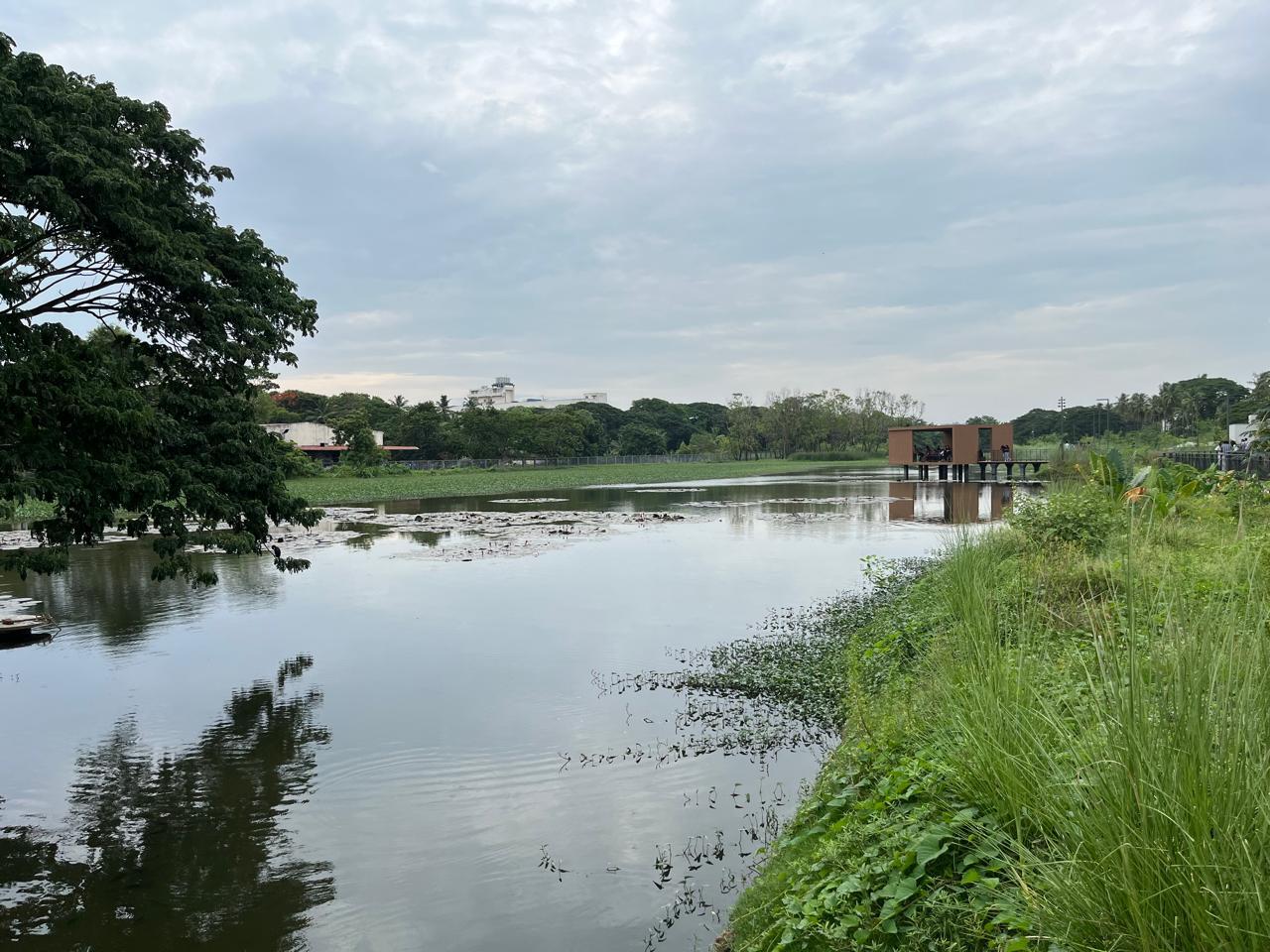From asphalt to wetland sponge park: How Chennai is absorbing water and building resilience
By Ramya M.A., ICLEI South Asia Secretariat
What if cities could act like sponges instead of concrete blocks? This is precisely what Chennai, India, is doing.
In March 2025, Chennai opened the Dr. M.S. Swaminathan Wetland Eco Park in Porur, its first wetland sponge park, a bold step in reclaiming a long-lost wetland once linked to Porur Lake. For decades, the site lay buried under asphalt, serving as a parking lot and dumping ground. Today, it has been reborn as a vibrant blue-green infrastructure that restores permeability and brings resilience to the city.
Chennai, the bustling capital of Tamil Nadu State with more than 12 million residents, sits on the frontline of climate risk. Rising seas and intensifying storms are reshaping coastlines worldwide, and Tamil Nadu is no exception. Studies warn that by 2100, 91% of its shoreline could face high flood risk.
The city has already felt the weight of these predictions: In 2015, a devastating deluge submerged large parts of Chennai, causing an estimated USD 3 billion in damages and leaving a stark reminder of how vulnerable coastal cities can be. To address such risks, Chennai is turning to a ‘spongify’ approach.
Sponge solutions: Turning to nature for protection
Sponge parks are nature-based solutions, artificially engineered wetlands designed to absorb, filter, store and release rainwater, mimicking the functions of natural wetlands. They can play a vital role in water retention, flood protection, increasing green cover and biodiversity, and reducing ambient temperatures.
Urban sprawl and land use planning are major factors that have increased the city’s susceptibility to floods. Since 1980, over 150 water bodies have been encroached upon. Wetlands, which act as natural buffers against flooding, have declined drastically, from covering 80% of the total land area in 1980 to just 15% in 2010.
Faced with these realities, the city is now implementing an ambitious plan to boost resilience under its Sponge City Initiative. Spearheaded by the Greater Chennai Corporation (GCC), the city now boasts 63 sponge parks, with 30 more planned this year. However, most of these are cement-lined retention ponds, where only the pond bunds are concreted, while the base remains permeable to allow percolation.
While these parks help improve permeability, what makes the Porur Wetland Eco-Park unique is its holistic, nature-based approach, serving as a blueprint to guide future sponge parks. This will also enhance the city’s performance under the City Biodiversity Index—the first of its kind to be developed for Tamil Nadu with support from ICLEI South Asia.
Currently, the city scores poorly in the ecosystem services provided by the biodiversity component, which measures aspects such as water permeability, climate regulation, and availability of parks. Revitalizing the city’s wetlands will significantly improve these ecosystem services and strengthen the city’s overall CBI score.
An inclusive park for all
Located on the western edge of the city and spanning 16.6 acres, the park was developed on the Open Space Reserved (OSR) land allocated by Ramachandra University.
Thanks to the city’s ‘Open Space Reserved’ policy, which mandates large developments over 10,000 square meters to dedicate 10% of their land to green areas, this space was transformed into a park that benefits both the community and the climate.
The M.S. Swaminathan Wetland Eco Park was designed and implemented by The Sponge Collaborative, a local planning and design firm, with funding provided by the Chennai Metropolitan Development Authority (CMDA), which oversees the Chennai Metropolitan Area. The park was developed in consultation with Chennai’s administrative heads and zonal engineers, as well as inputs from the community.
The wetland sponge park is already delivering benefits beyond flood resilience. Since work began in 2023, biodiversity has improved through eco-restoration and the number of bird species in the wetland has already increased.
A walking track, play area, and colorful and easy-to-understand signages make it an inviting public space, drawing families, joggers, and children outdoors, attracting active community engagement, and making the space accessible and educational for all.
This new space reinforces the importance of inclusivity in climate-adaptive urban design by showing in simple ways how urban ecosystems protect the city. This sense of community ownership is one of the strongest enablers of success. When people value and use such spaces, they become advocates for their maintenance and replication.
The journey of water through the sponge park
The site, once covered with impermeable asphalt, has been transformed into a carefully designed landscape that guides stormwater through a sequence of ecological processes.
- Bioswale: Stormwater first flows into a bioswale, or a vegetated channel, that slows down the flow of water, traps pollutants, and allows infiltration.
- Sedimentation pond: Heavier particles settle here, removing silt and debris.
- Aeration pond: Aquatic plants such as Cyprus and Lemongrass oxygenate the water, improving its quality.
- Phytoremediation pond: Selected plants absorb nutrients like nitrogen and phosphorus from the water. While effective for nutrient removal, such systems have limitations in treating heavy metals, which require more advanced methods.
- Retention basin: Finally, the treated water collects in a retention pond with a holding capacity of 30,000 liters, recharging groundwater and reducing urban flooding risk.

Key lessons and what’s ahead
Procuring specific wetland plants and phytoremediation species was a challenge as they were unavailable in local nurseries and suppliers. This issue was compounded by the absence of many special plant species in the Horticulture Department’s Schedule of Rates, a government-issued document that standardizes the costs of materials, labor, and equipment for infrastructure projects, making budgeting and procurement more complex.
Ensuring long-term financial sustainability is another concern, as the park is freely accessible to the public. To address this, the CMDA is exploring Public-Private Partnerships and Corporate Social Responsibility funding models to secure resources for long-term maintenance. Additionally, capacity building training is needed for the maintenance personnel and ward-level officials to ensure proper upkeep.
Future plans include monitoring and quantifying the park’s impact, particularly on parameters such as biodiversity, local temperature, air pollution, mental well-being and local flood reduction, to build an evidence base for replication and investment in similar initiatives.
With Chennai currently developing its third master plan, which will guide urban development till 2046, embedding such pilot initiatives and broader nature-based strategies into local development plans is essential for long-term sustainability and city-wide adoption.
Chennai’s wetland sponge park demonstrates what is possible when ecological design, inclusive planning, and community engagement come together.
Cities need not remain hard, impermeable blocks vulnerable to floods. They can become sponges: absorbing shocks, protecting people, and offering healthier, more livable, and resilient spaces for all.
* This blog was originally published by ICLEI South Asia Secretariat here.







